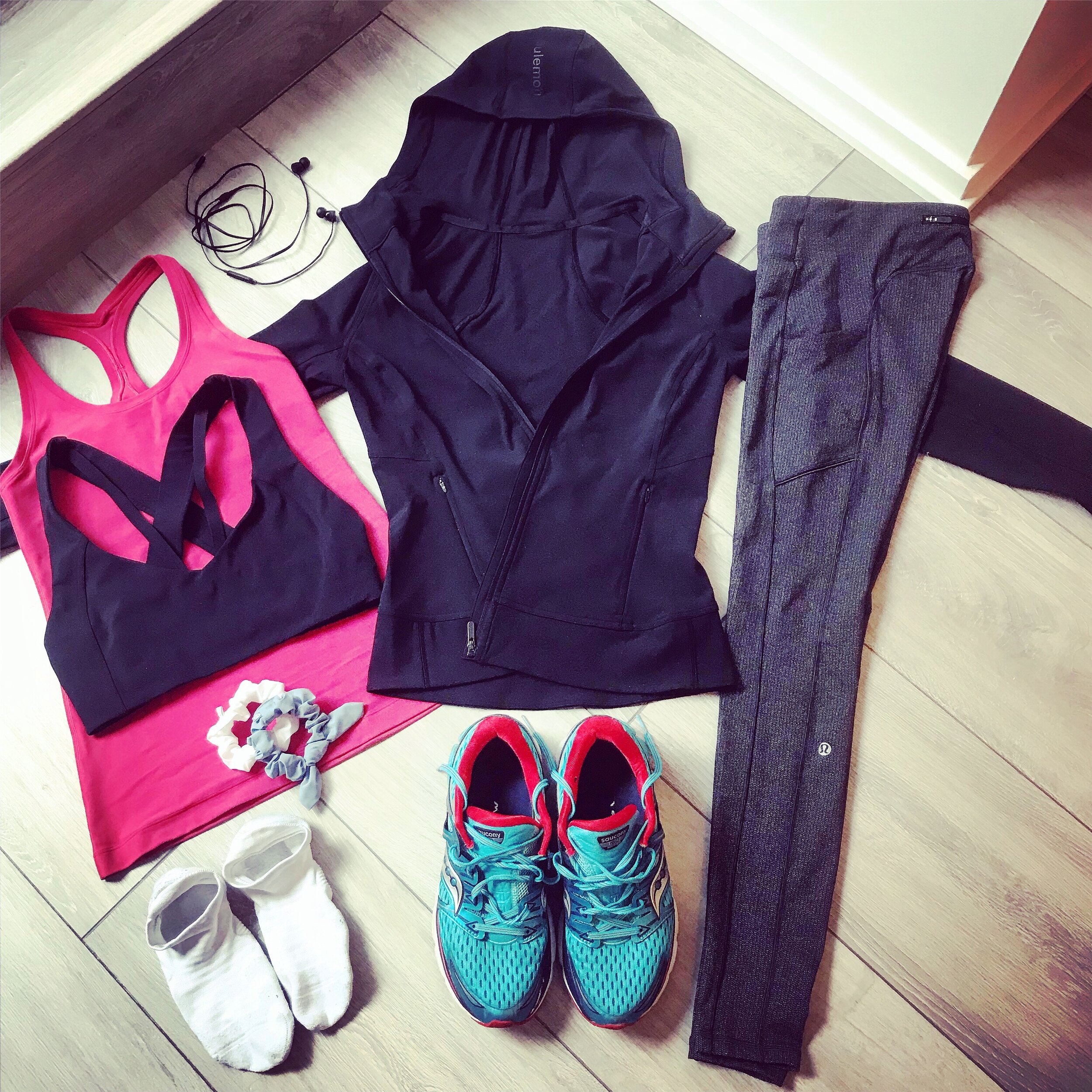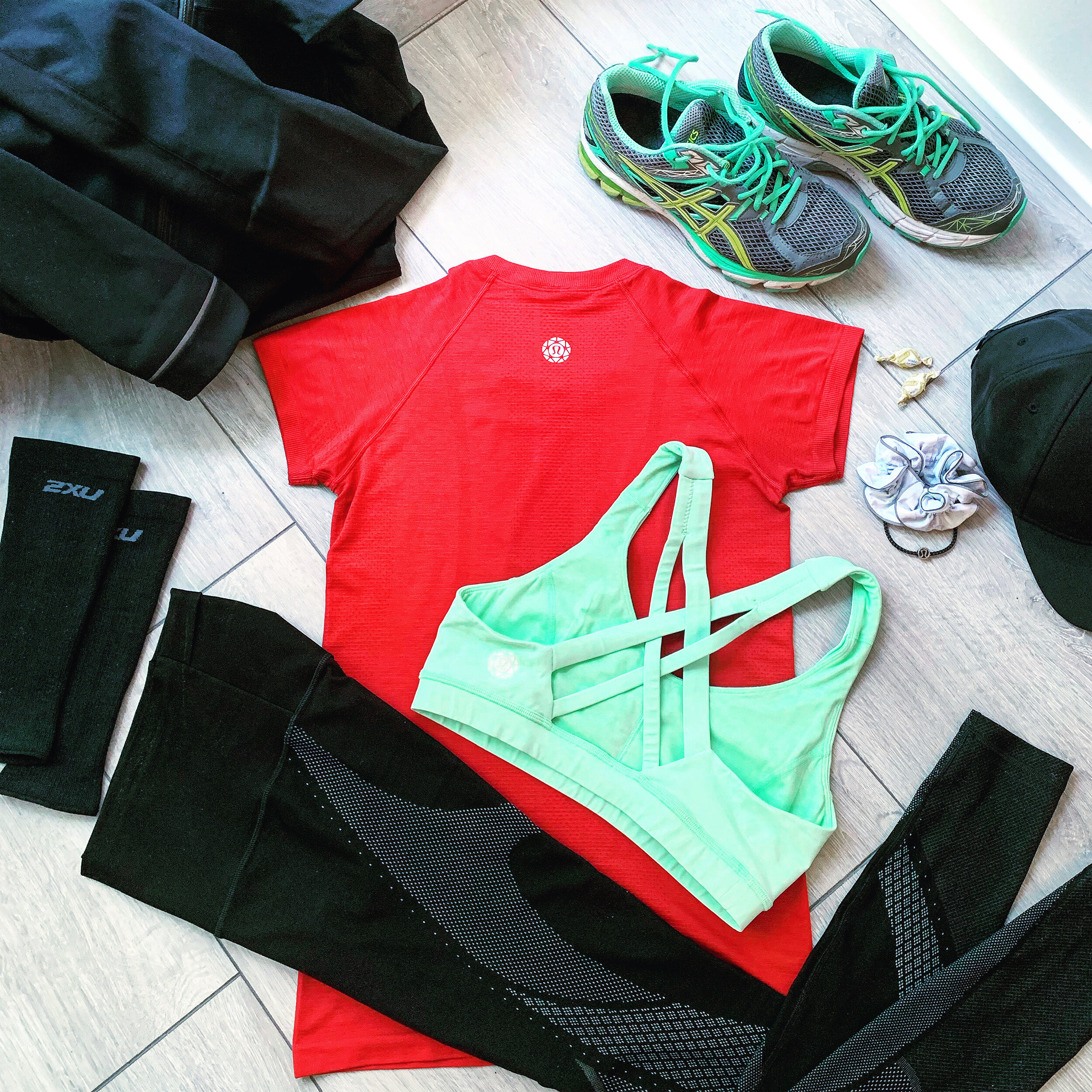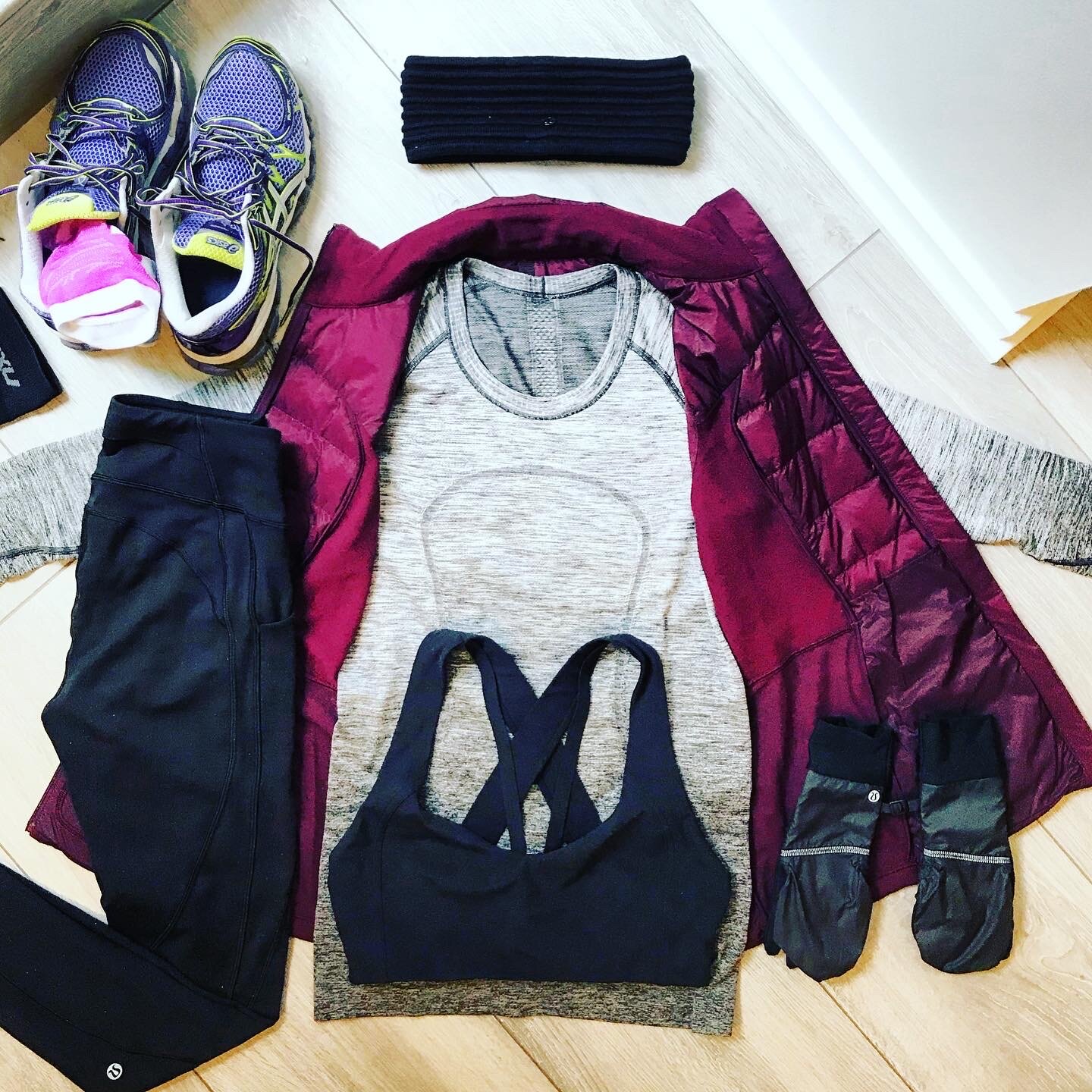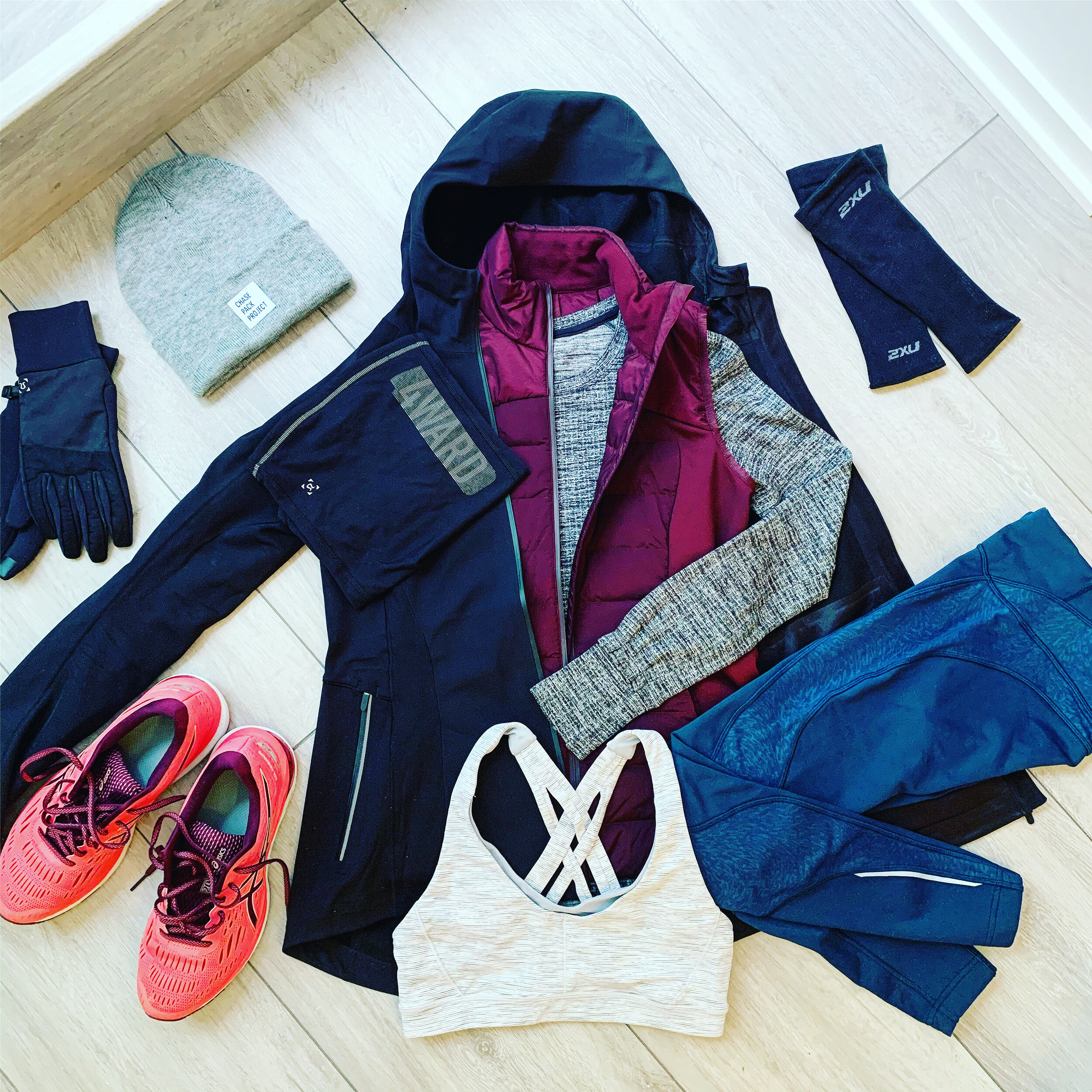How to dress for a cold-weather run
It’s the end of March and you’re thinking about running outdoors. Whether you’re just getting into running or you’ve been diligently training indoors for months, you’re probably wondering how to dress for the weather.
With average daily temperatures ranging from -8°C (low) to 4°C (high), often changing and notoriously difficult to predict, it’s important to choose the right technical gear that does MORE than just keep you warm.
COMFORT IS KEY
It’s easy to get caught up in all the terminology you hear around running gear (i.e., base layer, sweat-wicking, ventilating, waterproof, windproof, four-way stretch, etc.), with each word adding to the price tag at the till. True. These technical features are great to have … but only if they make your run more comfortable by alleviating annoying distractions.
Ask yourself:
Do I want to enjoy running in colder weather?
Do I want to avoid feeling too hot (and sweaty)?
Do I want to avoid feeling too cold (or risk hypothermia)?
Do I want to avoid freezing my fingers and toes?
Do I want to avoid freezing my ears (or other parts of my face)?
Do I want to avoid chaffing (or skin irritation)?
If you answered “YES!” to any of the questions above, read on.
The “Right” Body Temperature
A “distraction-free” run depends on how hard your body needs to work to regulate its core temperature. The harder it works, the more uncomfortable it’s likely to become.




Overheat and your body begins to sweat. Get too cold and the hands, feet, and extremities experience reduced blood flow. Either way, it gets uncomfortable. Knowing your body generates heat as you run, choosing the right clothing to maintain a consistent body temperature for the majority of your run (slightly above 98.6°F) can be a challenge.
When choosing what to wear, you should aim to:
Minimize overheating (and excessive sweat)
Keep dry (because cold sweat promotes hypothermia)
Keep hands, feet and extremities warm (with blood flowing to them)
Minimize discomfort
As a rule of thumb, you should dress for an outdoor run as if the temperature were 7°C warmer than the temperature on your weather app.
Running at Below Zero – Examples
Included are examples of specific cold-weather conditions, key considerations, and recommendations to properly dress for the occasion.
Level One: 0 to 5°C (cloudy, light wind)
On a cool spring (or late fall) day, the gear you choose sets the “base” for colder runs down the line. At these temperatures, you will begin considering longer layers and covering up all areas of exposed skin. If you are going on longer runs, where you generate more heat over a longer period of time, you can get away with shorts and/or a t-shirt.
For a 5K run, I suit up with a medium-weight, breathable zip up jacket, sweat-wicking tank top, full-length tights, and a ball cap (to protect from the sun). For a 10K run, I would wear shorts instead of the full-length tights.
Level Two: -5 to 0°C (sunny, moderate wind, light snow)
As temperatures dip below the zero-degree mark, I build off of my Level One (5K) gear and choose a sweat-wicking long sleeve shirt, a medium-weight windproof/waterproof shell, and add lightweight windproof gloves. For a 10K run, I would wear a sweat-wicking tank top under my long sleeve shirt (to help wick away sweat more effectively).
Level Three: -10 to -5°C (sunny, no wind, no snow)
Depending on your temperature “comfort level”, this is where the run can get uncomfortable, if not planned effectively. It is important to layer clothing to keep you warm at the beginning of your run yet allow for breathability and to keep you dry the rest of the way. Keeping hands, head, and ears covered and dry will also be essential.
For a 5K run, I suit up with a sweat-wicking thermal long sleeve pullover and lightweight down-filled running vest, full-length thermal tights, ear warmer/band, and thermal mittens. For longer runs (or if there is wind and/or snow), I would wear a light waterproof/windproof shell over top and include a breathable toque.
Level Four: Colder than -10°C
As temperatures get colder, it will be important to think carefully about sweat management. As sweat cools on your skin (in very cold conditions), you are at risk of hypothermia. In addition to Level Three (5K) gear, I would add a thermal-lined waterproof/windproof shell, a pair of shorts (over top the full-length tights), neck warmer, and down-filled lightweight mitts.
OTHER CONSIDERATIONS
A comfortable run is more than just keeping warm and dry. Proper fit runs a very close second. If a garment keeps you warm and dry but causes chaffing under the arms, is too tight around the groin area, or pinches under the bra line (sorry guys!), comfort goes out the window.
Below are other considerations when choosing the right gear for your cold weather run:
Long Sleeve Shirts: The sleeves and torso should be long enough. With arms stretched in front of you (like you’re driving a car), sleeves should cover the wrists and the bottom of the shirt should stay below the waist.
Tights: Tights should be made of fabrics that retain heat and are breathable. Reflective features are also recommended as daylight is scarce during winter months.
Jackets: These layers are meant to provide protection from wind and moisture, while not restricting movement (as arms move in stride). With arms stretched in front, the jacket should not feel tight under the armpits or across the back. Bright colours and/or reflective features are recommended.
Toques/Neck Warmers: Your head generates a significant amount of heat and moisture while you run. Choose garments that are light-weight, breathable, and not too restrictive.
Running Gloves: With increasingly colder weather, consider mittens versus gloves. Because hands are facing the wind at all times, a windproof covering or exterior is also recommended. Ventilation is also useful to keep the skin dry during long, cold runs.
At the end of the day, the gear you choose should feel like it was “meant” to be on you. It shouldn’t be a distraction from feeling the ground underneath your feet or your heart beat in your chest, as your breath courses in and out of your lungs.
USEFUL LINKS
https://www.runnersworld.com/gear/g20862641/best-running-gloves/
https://www.runnersworld.com/gear/g20864896/winter-running-hats/
https://www.runnersworld.com/gear/a20865161/best-winter-running-jackets
Andrea (@sixfootcanasian), a fitness "nerd" turned techpreneur, is a lifestyle blogger in the YYC. With a new found love of running (and curiosity about how to make it accessible to everyone), she can be spotted at local running events (and meetups) and various CrushCamp classes each week.

